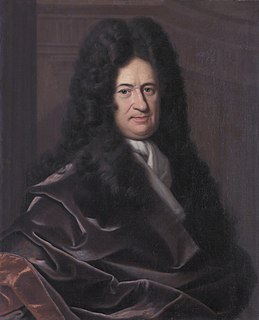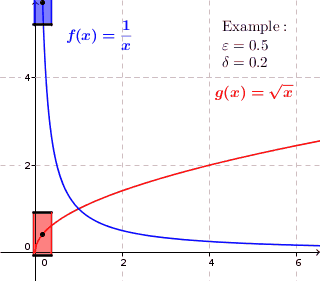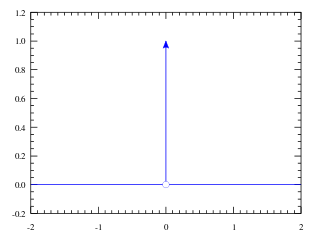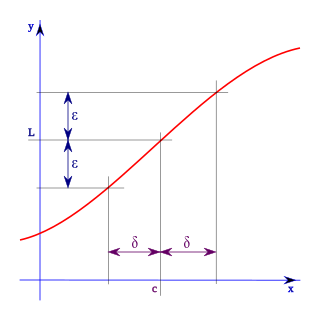In non-standard analysis, a branch of mathematics, overspill (referred to as overflow by Goldblatt (1998, p. 129)) is a widely used proof technique. It is based on the fact that the set of standard natural numbers N is not an internal subset of the internal set *N of hypernatural numbers.

The history of calculus is fraught with philosophical debates about the meaning and logical validity of fluxions or infinitesimal numbers. The standard way to resolve these debates is to define the operations of calculus using epsilon–delta procedures rather than infinitesimals. Non-standard analysis instead reformulates the calculus using a logically rigorous notion of infinitesimal numbers.

Mathematics includes the study of such topics as quantity, structure, space, and change.

In mathematics, the natural numbers are those used for counting and ordering. In common mathematical terminology, words colloquially used for counting are "cardinal numbers" and words connected to ordering represent "ordinal numbers". The natural numbers can, at times, appear as a convenient set of codes ; that is, as what linguists call nominal numbers, foregoing many or all of the properties of being a number in a mathematical sense.
By applying the induction principle for the standard integers N and the transfer principle we get the principle of internal induction:

Mathematical induction is a mathematical proof technique. It is essentially used to prove that a property P(n) holds for every natural number n, i.e. for n = 0, 1, 2, 3, and so on. Metaphors can be informally used to understand the concept of mathematical induction, such as the metaphor of falling dominoes or climbing a ladder:
Mathematical induction proves that we can climb as high as we like on a ladder, by proving that we can climb onto the bottom rung and that from each rung we can climb up to the next one.
In model theory, a transfer principle states that all statements of some language that are true for some structure are true for another structure. One of the first examples was the Lefschetz principle, which states that any sentence in the first-order language of fields that is true for the complex numbers is also true for any algebraically closed field of characteristic 0.
For any internal subset A of *N, if
- 1 is an element of A, and
- for every element n of A, n + 1 also belongs to A,
then
- A = *N
If N were an internal set, then instantiating the internal induction principle with N, it would follow N = *N which is known not to be the case.
The overspill principle has a number of useful consequences:
- The set of standard hyperreals is not internal.
- The set of bounded hyperreals is not internal.
- The set of infinitesimal hyperreals is not internal.

In mathematics, infinitesimals are things so small that there is no way to measure them. The insight with exploiting infinitesimals was that entities could still retain certain specific properties, such as angle or slope, even though these entities were quantitatively small. The word infinitesimal comes from a 17th-century Modern Latin coinage infinitesimus, which originally referred to the "infinite-th" item in a sequence. Infinitesimals are a basic ingredient in the procedures of infinitesimal calculus as developed by Leibniz, including the law of continuity and the transcendental law of homogeneity. In common speech, an infinitesimal object is an object that is smaller than any feasible measurement, but not zero in size—or, so small that it cannot be distinguished from zero by any available means. Hence, when used as an adjective, "infinitesimal" means "extremely small". To give it a meaning, it usually must be compared to another infinitesimal object in the same context. Infinitely many infinitesimals are summed to produce an integral.
In particular:
- If an internal set contains all infinitesimal non-negative hyperreals, it contains a positive non-infinitesimal (or appreciable) hyperreal.
- If an internal set contains N it contains an unlimited (infinite) element of *N.







